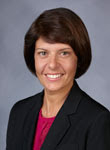Lost In The Shuffle: How Health And Disability Laws Hurt Disordered Gamblers [NCRG Webinar]

Aug. 21, 2-3 p.m. ET |Click here to register
The field of gambling disorder has seen many changes over the past year, many of which are due to the American Psychiatric Association’s fifth edition of theDiagnostic and Statistical Manual of Mental Disordersand the Affordable Care Act. Many private health insurance policies and plans exclude treatments for gambling disorder from insurance coverage. However, healthcare providers specializing in disordered gambling have hoped that the Affordable Care Act and the strengthening of the federal mental health parity law would address this shortcoming. But is this the case?
UNLV law professor and leading expert Stacey Tovino. J.D., M.P.H., has meticulously researched this question and found that disordered gamblers seeking treatment and services continue to be excluded from health and disability coverage in some states and in some health plan contexts.
Register for the last session of the free 2014 NCRG Webinar SeriesonAug. 21from2 to 3:30 p.m. ET. Dr. Tovino will discuss her ground-breaking research, using case studies, and offer potential remedies for ensuring that individuals with gambling disorder have the same legal protections as individuals with other addictive disorders. Attendees will receive 1.5 CE hours fromapproved institutions.

